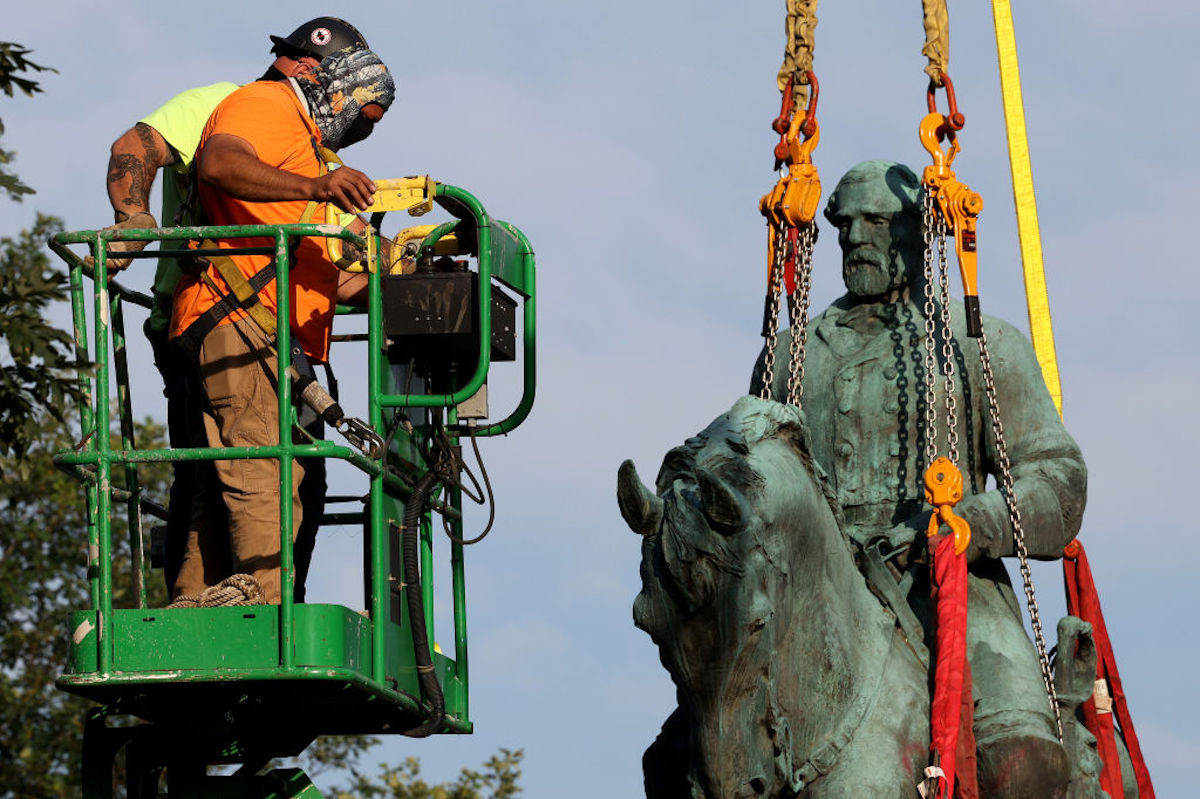The Charlottesville Statue of Robert E. Lee Has Been Melted Down

The statue of Robert E. Lee that inspired the deadly white supremacist Charlottesville riot in 2017, when white nationalists came out in defense of its public display, has finally been melted down at an anonymous foundry in Virginia.
Marking the first time a Confederate statue has been destroyed by the state rather than simply put into storage, hopefully this is the start of a trend that will see other such monuments to hate and failure meeting a similar fate across the USA.
While the statue was finally removed from public display in 2021 there were still several ongoing lawsuits attempting to protect and restore it to its previous location, which meant rather than disposing of it, the council was forced to put it in storage until all the legal matters were resolved. With the final case resolved on September 26 of this year, the council was finally free to proceed with the plans unanimously voted for in 2021: sending the statue to be melted down, and its brass repurposed for more useful things going forward.
The plan was proposed and overseen by the local non-profit, Jefferson School African American Heritage Center. The group reportedly intends to take the brass that used to make up the visage of defeated, pro-slavery, Confederate leader/traitor Robert E. Lee and make it into a new public art project, to be installed on August 12, 2027. That’s just in time for the ten-year anniversary of what’s come to be known as the Summer of Hate for the alt-right, neo-Nazi violence that terrorized the Charlottesville community, taking the life of counter-protester Heather Heyer and injuring several more.
The foundry used to recycle the statue into something more fitting is being kept anonymous in order to protect the workers from any kind of violent reprisals, a legitimate concern after the escalating open white supremacist violence of the last decade.
Activists who have campaigned against the statue’s public presence, some of whom faced violence from the rioters during 2017, were able to be present as the statue was melted down, with Jalane Schmidt—a University of Virginia professor and Charlottesville Black Lives Matter co-founder—telling The Guardian, “It was very solemn. Nobody cheering, nothing like that. It was very quiet. People weren’t even talking.”
For the Reverend Isaac Collins, a pastor who was based in Charlottesville during the summer of white supremacist violence, being present and watching the statue melt was a moment tied into the legacy of the last 400 years of race relations, violence, and anti-racist struggle in the United States. Collins told the same outlet:
“To be present was … it’s hard to put into words. We were a part of this hundred-year history of resistance to the statue, but also this 400-year legacy of race in the United States. So, it was very gratifying. It was very sobering. It was humbling.”
Others present reported that the head of the statue looked like it was crying as it melted or commented on how fitting it was that the brass itself contained impurities, with Collins saying “the impure nature of what these statues have always stood for, sort of living on in the material that they were created out of.”
The news has been received well online, with a general consensus of “it’s about time,” though of course the usual racist responses are smattered in there as well. As Schmidt says, the melting down of a Confederate statue is “unprecedented.” Now that the precedent has been set, hopefully the rest of Virginia will see this as a viable solution to the “statue graveyard” where all the other disgraced Confederate monuments are waiting.
(via The Guardian, featured image: Win McNamee/Getty Images)
Have a tip we should know? tips@themarysue.com